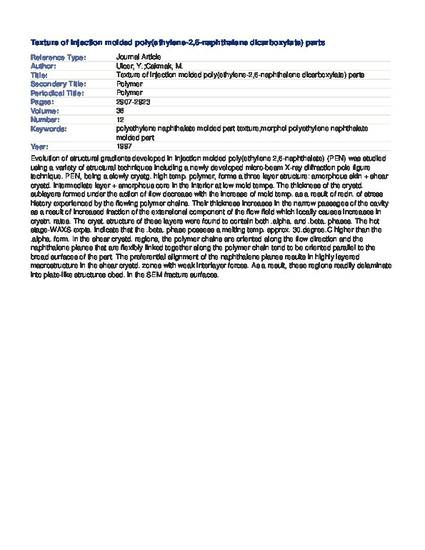
Evolution of structural gradients developed in injection molded poly(ethylene 2,6-naphthalate) (PEN) was studied using a variety of structural techniques including a newly developed micro-beam X-ray diffraction pole figure technique. PEN, being a slowly crystg. high temp. polymer, forms a three layer structure: amorphous skin + shear crystd. intermediate layer + amorphous core in the interior at low mold temps. The thickness of the crystd. sublayers formed under the action of flow decrease with the increase of mold temp. as a result of redn. of stress history experienced by the flowing polymer chains. Their thickness increases in the narrow passages of the cavity as a result of increased fraction of the extensional component of the flow field which locally causes increases in crystn. rates. The cryst. structure of these layers were found to contain both .alpha. and .beta. phases. The hot stage-WAXS expts. indicate that the .beta. phase possess a melting temp. approx. 30.degree.C higher than the .alpha. form. In the shear crystd. regions, the polymer chains are oriented along the flow direction and the naphthalene planes that are flexibly linked together along the polymer chain tend to be oriented parallel to the broad surfaces of the part. The preferential alignment of the naphthalene planes results in highly layered macrostructure in the shear crystd. zones with weak interlayer forces. As a result, these regions readily delaminate into plate-like structures obsd. in the SEM fracture surfaces.
Available at: http://works.bepress.com/mukerrem_cakmak/232/
